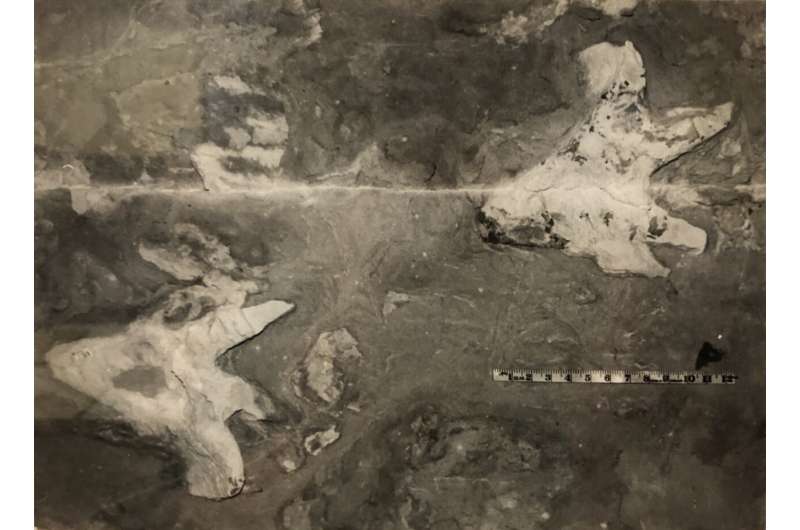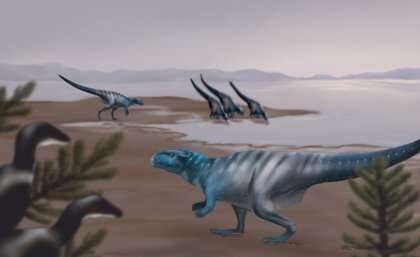'Dino Cave' reveals dinosaur crouch walkers

Old photos from Mount Morgan's sealed off "Dino Cave' have shed light onto new and unusual Aussie dinosaur behaviours, thanks to University of Queensland research.
For a decade, a Mount Morgan cave in central Queensland known for the highest dinosaur track diversity on the entire eastern half of Australia has been closed to the public, restricting research to the site.
Although UQ palaeontologist Dr. Anthony Romilio has had success searching for images of the tracks, he has only recently been provided with new images of different dinosaur's footprints at the site by the Mount Morgan Historical Museum.
"These photographs of fossil footprints have been on museum-display for years," Dr. Romilio said.
"Up until now, it was unknown what type of dinosaurs made these tracks or what the tracks meant.
"A typical dinosaur track of this kind look like those made by birds, but these are shaped like broad-handled forks."
Upon further inspection, Dr. Romilio revealed that the dinosaur must have created the tracks while crouched.
"It's very strange behaviour, and we don't yet know why it did this," Dr. Romilio said.
"You can rule out predatory stalking behaviour, as this set of tracks was made by a two-legged plant eater called an ornithopod.

"And interestingly, this crouching dinosaur was taking bigger steps than other 'normal' walking dinosaurs.
"This unusual posture likely made the prehistoric animal more stable allowing them to quickly cross the muddy shore of an ancient lake."
Dr. Romilio is keen to investigate this mysterious dinosaur despite all of the unknowns.
"There are nine sites in the "Dinosaur Caves' that contain fossil footprints," Dr. Romilio said.
"Where exactly these photos were taken, and when, we just don't know.
"Many of the Mount Morgan track sites were mapped in the early 2000s, although these footprints don't appear on any of them.
"It may be that these fossils had already eroded, making these, and other old photos like them, so incredibly important, as they're our only record of these creature's existence."
The research has been published in Historical Biology.
More information: Anthony Romilio. Additional notes on the Mount Morgan dinosaur tracks from the Lower Jurassic (Sinemurian) Razorback beds, Queensland, Australia., Historical Biology (2020). DOI: 10.1080/08912963.2020.1755853
Provided by University of Queensland





















